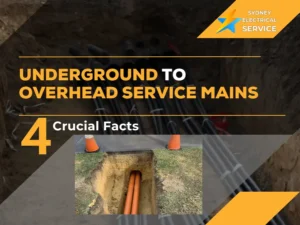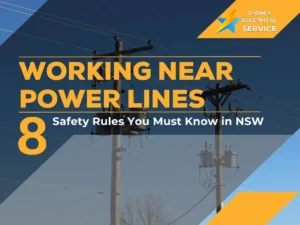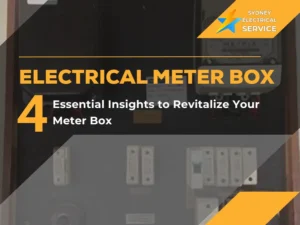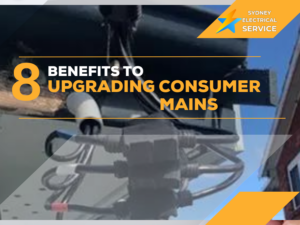Google Reviews ⭐⭐⭐⭐⭐

When it comes to managing and maintaining electrical infrastructures, the transition from underground to overhead systems – known as UGOH – plays a crucial role. Often overlooked, this component is integral to ensuring consistent and safe power delivery. Here, we delve into four key facts about UGOH, providing insights that are not only enlightening but also essential for anyone dealing with electrical installations or upgrades.
1. Understanding UGOH: What It Really Means
UGOH systems are a critical part of electrical distribution networks, bridging underground and overhead wiring systems. This transition is not just a mere connection but a well-engineered solution designed to maintain the integrity and reliability of the electrical supply. Understanding this system is paramount for effective energy management and infrastructure planning.
2. Safety and Reliability:
Safety is a prime concern in any electrical system, and UGOH installations are no exception. These systems are designed to minimize safety risks associated with electrical connections. By transitioning from underground to overhead, UGOH systems mitigate hazards like water ingress or physical damage to underground cables while ensuring reliable power distribution to overhead lines.
3. Cost and Installation: Balancing Expenses with Efficiency
Implementing a UGOH system involves a balance between cost and efficiency. While the initial setup might be more expensive than traditional overhead lines, the long-term benefits often justify the investment. This includes reduced maintenance costs, enhanced safety, and a lower risk of outages due to environmental factors.
4. Regulatory Compliance and Standards
Navigating the complexities of regulatory standards is essential when dealing with UGOH systems. Compliance with local and national electrical codes ensures that these installations meet the required safety and operational standards. Professional installation and regular inspections are key to maintaining these standards, preventing potential legal and safety issues.
The Importance of Expertise in UGOH Installations
Understanding the nuances of Underground to Overhead Service Mains is crucial for any property owner or manager. As these systems become more prevalent, professional guidance and expertise in their installation and maintenance are indispensable. With this knowledge, you can ensure that your UGOH system not only complies with all safety standards but also operates at peak efficiency.
UGOH Applications:
Underground to Overhead Service Mains (UGOH) are key in modern electrical setups, offering flexibility and safety across various settings. From neat residential areas to bustling commercial districts and expansive industrial sites, UGOH systems adapt to diverse needs. They’re crucial in blending old and new in historic areas, supporting emergency power routes, and integrating renewable energy into the grid. This variety of uses highlights UGOH’s vital role in evolving and efficient power distribution.
- Residential Developments:
- In new residential areas where underground wiring is preferred for aesthetic reasons, UGOH systems can be used to transition to overhead lines where necessary. This is often seen in suburban neighborhoods where underground cables supply power to individual homes but connect to overhead lines near main roads or distribution points.
- Commercial Districts:
- In commercial districts, especially in newly developed business parks, UGOH systems are employed to maintain a clean and uncluttered streetscape. Underground cables run beneath the business park, transitioning to overhead lines as they connect to the wider power grid or main distribution networks.
- Industrial Facilities:
- Industrial settings often use UGOH systems for their flexibility and safety. They allow for easy distribution of power within large industrial complexes where overhead lines are used for long-distance transmission and underground cables for localized distribution to specific buildings or machinery.
- Rural to Urban Transitions:
- In areas where rural settings transition into urban spaces, UGOH systems provide seamless integration of power distribution. This is particularly useful in expanding towns where the power infrastructure needs to adapt to changing landscapes and usage patterns.
- Renovation of Historic Districts:
- In historic or conservation districts, where preserving the visual integrity of the area is crucial, UGOH systems allow for the modernization of electrical infrastructure without disrupting the area’s historic charm. Underground cables are used within the district, connecting to overhead lines outside the sensitive area.
- Emergency Power Routes:
- UGOH systems can be crucial in designing emergency power routes. In emergency or disaster recovery situations, they provide a more resilient and flexible means to reroute power where underground or overhead lines alone might be compromised.
- Expansion of Urban Infrastructure:
- As cities expand and infrastructure is upgraded, UGOH systems are often utilized in the development of new roads, bridges, and tunnels where a combination of underground and overhead power solutions is required for effective space management and power distribution.
- Integration with Renewable Energy Sources:
- In areas where renewable energy sources like solar or wind farms are connected to the grid, UGOH systems can be used. They often involve underground cables within the renewable energy site, connecting to overhead lines that link to the main power grid.
The Role of Level 2 ASPs and Electricians in UGOH Work
When dealing with Underground to Overhead Service Mains (UGOH), only certain professionals are authorized to carry out the necessary work. Specifically, this task requires the expertise of a Level 2 Accredited Service Provider (ASP) or a Level 2 Electrician. These individuals are not only licensed electricians but also have additional qualifications and certifications that enable them to handle the complexities of both underground and overhead electrical systems. Their training ensures they are adept in understanding the intricate safety standards and regulatory compliance required for UGOH systems. For any installation, maintenance, or repair work involving UGOH, it’s essential to engage a Level 2 ASP or Level 2 Electrician to guarantee the work is done safely, efficiently, and in accordance with all legal standards.
The NSW Government’s page on the Accredited Service Provider (ASP) scheme provides comprehensive information about the regulations and policies related to electrical works, including UGOH systems. It highlights the necessity of using accredited professionals, specifically Level 2 ASPs, for certain types of electrical works. This ensures that all work complies with safety standards and regulations. The ASP scheme is integral in maintaining the integrity of electrical installations and ensuring public safety. For a detailed understanding of the scheme and its requirements, it’s recommended to refer to the information provided on their website.
For more information, you can visit the NSW Government’s page on the ASP scheme: ASP Scheme – Frequently Asked Questions.
Sydney Electrical Service offers a wide range of electrical services, including Level 2 electrical work and emergency electrician services, and is authorized to carry out Level 2 contestable works.
The team of 24-hour electricians specializes in providing fast, reliable, and high-quality services for both residential and commercial needs in Sydney. Emphasizing customer satisfaction, we ensure all work is compliant with NSW Electrical Safety Regulations.












